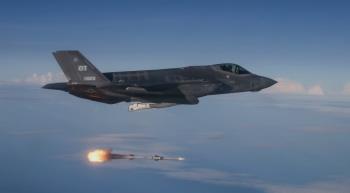Alwaght- Military sources have reported that the Syrian army, backed by a coalition of allied forces, has made fresh major gains in Sad Al-Zalf region of Sweida’s eastern outskirts. The major operation in southwestern Syria has led to retaking about 1,300 kilometers of the region and some hilltops overlooking it from ISIS terrorist group.
The outlets also reported big damages inflicted to ISIS terrorists. Some villages, including Tal Al-Tabaqa, Tal Al-Riyahi, Tal Al-Odhami, and Bir Al-Sawt were also liberated from ISIS grasp. The campaign, moreover, freed all of the military bases existing 30 kilometers along the Syrian borders with Jordan.
Reaching Jordan borders
The Syrian army had brought stability to the strategic areas like the capital Damascus and also the northern province of Aleppo before deciding to head to the important border areas like the Al-Tanf border crossing that is held by the opposition forces backed by the US. The push towards Al-Tanf comes to address goals of a scheduled plan designed by the Iraqi and Syrian governments to press against the militants from two sides of the border.
Advancing into the border region is crucial for the army as it serves as a supply line for the takfiri terrorists. In fact, despite a fierce fighting with the army, they had enough time and place to rebuild their strength and move equipment across the border. So far, the militants inflicted many damages on the allied forces by carrying out surprise attacks on them.
Full control on the border areas between Syria and Jordan will aid the Syrian army to implement its military strategies on the ground more orderly and successfully, and at the same time deter surprise assaults launched by the terrorists and meant to disorganize its forces. In case of recapture of the terrorist-held border areas, the army can make sure that there is no enemy to ambush the camping forces from behind, and that the opposite side has no loopholes to get through and launch offensives.
The crucial Al-Tanf
At the time being, al-Tanf region, which is of double significance militarily and even politically, remains under militants' control. A series of factors make it overarching for the Syrian government's forces. It is a meeting point of borders of the three countries of Syria, Jordan, and Iraq, and hosts a border crossing, which is an important ground border path between Syria and Iraq.
Moreover, al-Tanf border crossing connects the Iraqi capital Baghdad to the border town of Al-Ratbah in Al-Anbar province's west, and from there to border town of Alsabeh Yabar in eastern Syria, and from there to the Syrian capital Damascus. Strategically, al-Tanf recapture from opposition fighters and cleansing the surrounding areas of ISIS will facilitate link of Tehran, a major anti-terror actor, to Baghdad and Damascus. This means Iran’s access to the Mediterranean and thus northern Israeli borders.
US approach
The US approach to the Al-Tanf is considerable, as Washington cannot wait and see the border area returning under control of the Syrian army and its allies. This American approach can cause remarkable complication and tension amid Damascus resolution to reclaim the area which was seized from ISIS by Syrian opposition forces in early 2016, a year after ISIS captured it.
The US deployed forces to Al-Tanf after its seizure. What drives American presence and struggle for full control of the area is an intention to facilitate destabilizing measures and support of the opposition forces who have the American fighter jets' cover. Currently, Al-Tanf is held by the Revolutionary Commando Army (Maghawir al-Thawra in Arabic and New Syrian Army previously) that so far proved an appropriate server of the American interests.
Beside attempts to tighten grip on Al-Tanf, the US, many evidences suggest, strives after seizure of Syria’s Abu Kamal city near the Iraqi border city of Al-Qa’im, where also a border crossing exists with the same name. ISIS holds Al-Qa’im border path and its defeat there will allow the Americans hold the two major border areas between Syria and Iraq. Time remains the main determiner of who, Syrian forces or the US-backed militants or even the American troops, will first clash with ISIS for Abu Kamal.
The presence of US forces and proxies in the border regions can also set up roadblocks ahead of Iraq’s Popular Mobilization Forces (PMF) who are preparing plans for Syrian borders deployment.
Axis of Resistance’s access to the Al-Tanf region, which allows access to Damascus, is highly vital. Beside securing the Axis of Resistance countries, road access to Damascus will boost their battlefield maneuvering power and give them trump cards for the negotiating table. This can prompt many political developments and push the peace negotiations towards progression, and in general reward the Syrian crisis with peaceful settlement.
But many experts assert that the US will continue its policy of stirring regional chaos as long as risks to the Israeli security and interests remain standing. Washington will proceed with this pathway through playing with Moscow and appeasing it on the Syrian ground.



























